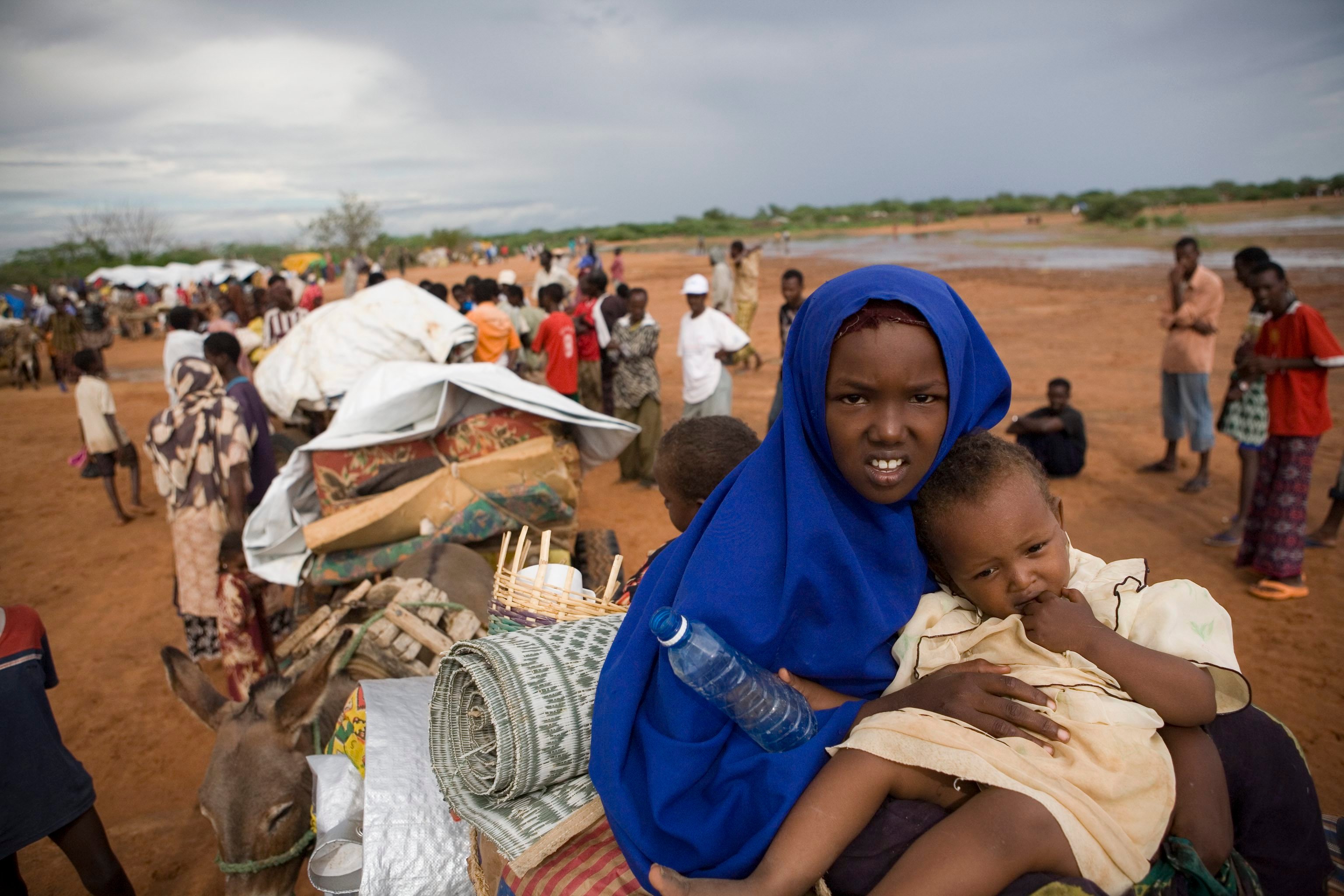Number of Somali refugees grows sharply in 2011
Number of Somali refugees grows sharply in 2011
UNHCR is alarmed by the continuing deterioration of the situation in Somalia, forcing an increasing number of Somalis into displacement. The number of Somali refugees arriving to neighbouring countries during the first quarter of this year has more than doubled in comparison to the same period in 2010.
Between January and March this year, nearly 50,000 new Somali refugees have been registered in the neighbouring Kenya, Ethiopia and Yemen. By comparison, some 23,000 fled during the same quarter last year.
Kenya again received most of the new arrivals - more than 31,400. Virtually all of them have been registered by the Kenyan authorities and UNHCR in Dadaab refugee camp complex - on average some 10,000 a month.
In Ethiopia, we are also witnessing a sharp rise in the number of Somali arrivals. We registered more than 12,200 Somalis crossing mostly through the Dollo Ado corridor. UNHCR is running two refugee camps there. Both camps are fast reaching their maximum capacity.
The majority of these refugees came from the Bay and Bakol regions of southern and central Somalia - two of the major conflict zones in the country. They all speak of a grim situation inside the country marked by relentless violence and human rights abuses. Somali refugees told our teams about forced conscription by some of the warring parties and crippling drought.
The dire situation in Somalia is leaving no alternative for many, forcing them to take a desperate decision to cross the Gulf of Aden or the Red Sea. Despite the risks involved and despite the popular unrest and the deterioration of the situation in Yemen, more than 22,000 refugees and migrants from the Horn of Africa arrived on Yemeni shores during the first three months of 2011.
This is more than twice the number of arrivals during the first quarter of 2010 when some 9,400 people reached Yemen and it topples the record high beginning of 2009 when nearly 17,000 refugees and migrants crossed the Gulf of Aden and the Red Sea.
Similar to 2010, Somalis continue to represent only every fourth arrival to Yemen, although their number doubled in comparison to the first quarter of 2010 (3,200 in 2010 to 6,000 in 2011). Ethiopian migrants, whose arrivals almost tripled (nearly 17,000 in 2011), continue to account for 75 per cent of all of the crossings.
Some of the new arrivals told us that they were unaware of the political and social upheaval in Yemen, but many coming from Somalia said they had no other option but to flee. For these Somali refugees the situation in Yemen was still, by comparison, much safer than the one back home.
Somalia remains one of the countries generating the highest number of refugees and internally displaced people (IDPs) in the world. An estimated 1.4 million Somalis are displaced within the country while another 680,000 live as refugees in the neighbouring countries.
For further information on this topic, please contact:
- In Nairobi, Kenya (Somalia Ops): Andreas Needham on mobile +254 733 120 931
- In Sana's, Yemen: Cagri Hurmuzlu on mobile +967 711 900 063
- In Geneva: Andrej Mahecic on mobile +41 79 200 7617




